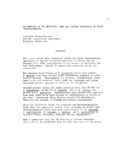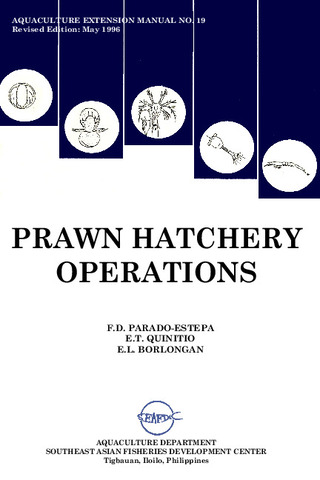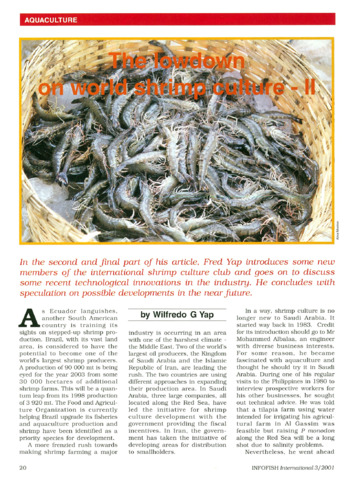Utilization of organic waste from black tiger shrimp, Penaeus monodon, by sandfish, Holothuria scabra
- Global styles
- MLA
- Vancouver
- Elsevier - Harvard
- APA
- Help

View/
Date
2012Author
Page views
2,668ASFA keyword
AGROVOC keyword
Taxonomic term
Metadata
Show full item record
Share
Abstract
In Southeast Asian countries, a large proportion of shrimp aquaculture has switched its target species from native black tiger shrimp, Penaeus monodon, to exotic P. vannamei because of frequent viral disease outbreaks. One of the causes of disease outbreaks is thought to be poor water and sediment conditions in the shrimp pond, which aggravate disease symptoms. To establish co-culture methods of black tiger shrimp and sandfish, Holothuria scabra, for possible mitigation of shrimp pond eutrophication and prevention of disease outbreaks, laboratory experiments were conducted at the Aquaculture Department, Southeast Asian Fisheries Development Center (SEAFDEC/AQD) in Iloilo, Philippines. A feeding trial of juvenile H. scabra using benthic diatom, Navicula ramossisima, and powdered P. monodon feed showed that H. scabra do not grow with fresh shrimp feed on a hard substrate. A feeding trial with and without sand substrate with shrimp feed as food showed that the substrates enhance the growth of H. scabra. H. scabra juveniles were found to grow with detritus and P. monodon feces as food sources in tanks. It was also shown that addition of ground oyster shell to the sand substrate enhances the growth of H. scabra when fed with N. ramossisima. Thus, these results suggest that H. scabra can grow by feeding on organic matter present in a P. monodon pond and may be used to mitigate organic load in P. monodon ponds.
Suggested Citation
Watanabe, S., Zarate, J. M., Lebata-Ramos, M. J. H., Nievales, M. F. J., & Kodama, M. (2012). Utilization of organic waste from black tiger shrimp, Penaeus monodon, by sandfish, Holothuria scabra. In K. Tanaka, S. Morioka, & S. Watanabe (Eds.), Sustainable stock management and development of aquaculture technology suitable for Southeast Asia (JIRCAS Working Report No. 75) (pp. 81-86). Tsukuba, Ibaraki, Japan: Japan International Research Center for Agricultural Sciences.
Type
Book chapterISSN
1341-710XSeries
JIRCAS Working Report; No. 75Collections
- Books and Book Chapters [123]
Related items
Showing items related by title, author, creator and subject.
-
An overview of the nutrition, feed and feeding techniques of prawn penaeid/shrimps
Piedad-Pascual, Felicitas (Philippine Council for Aquatic and Marine Research and Development, 1989)This paper echoes what transpired during the first International Conference of Penaeid Prawns/Shrimps held in Iloilo City in December 4-7, 1984, particularly on the Nutrition nd Feed Development. Around 25 papers were ... -
Series: Aquaculture extension manual; No. 19
Prawn hatchery operations
Parado-Estepa, Fe D.; Quinitio, Emilia T. ; Borlongan, Emeterio L. (Aquaculture Department, Southeast Asian Fisheries Development Center, 1996-05)
The manual, an updated version of the 1984 SEAFDEC/AQD manual, presents the underlying principles and step-by-step instructions of prawn larval and post-larval rearing. The techniques described are not only applicable to ...
; Borlongan, Emeterio L. (Aquaculture Department, Southeast Asian Fisheries Development Center, 1996-05)
The manual, an updated version of the 1984 SEAFDEC/AQD manual, presents the underlying principles and step-by-step instructions of prawn larval and post-larval rearing. The techniques described are not only applicable to ... -
The lowdown on world shrimp culture - II
Yap, Wilfredo G. (INFOFISH, 2001)This paper introduces some new members of the international shrimp culture club and goes on to discuss some recent technological innovations in the industry, particularly the polyculture of tilapia (mainly Oreochromis ...





